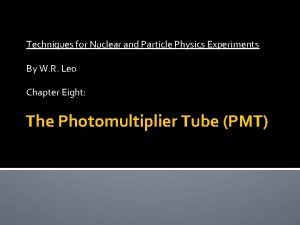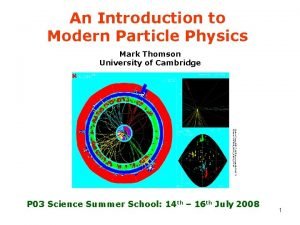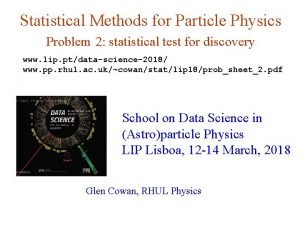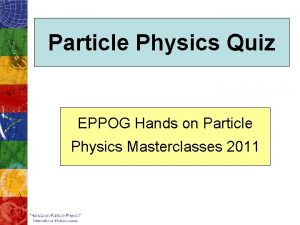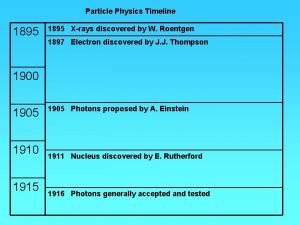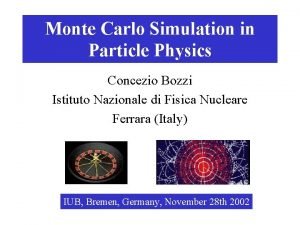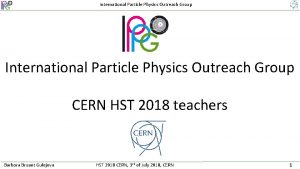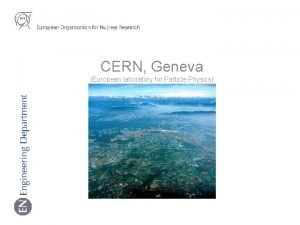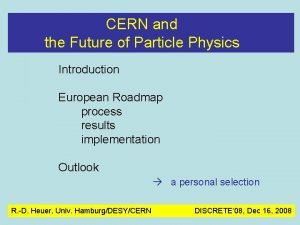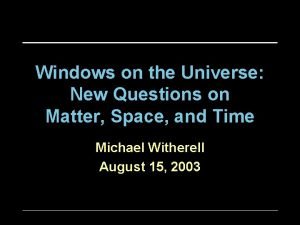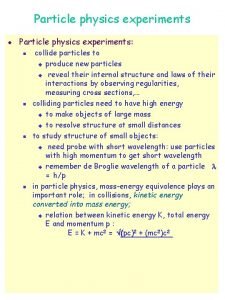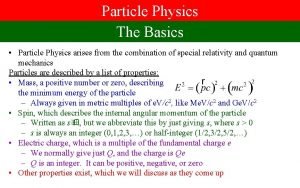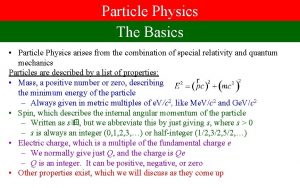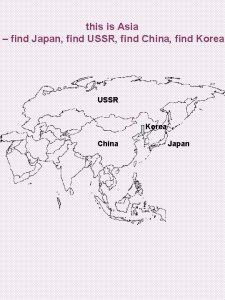Particle physics Particle physics Aim Find rules for









- Slides: 9

Particle physics

Particle physics Aim: Find rules for particles interactions and transformations. Method: Collide particles at high energy to produce interactions and transformations, then track and analyse resulting particles. Particle creation and annihilation follows E = mc 2. SLAC (90 Ge. V) electrons + positrons CERN LEP 1989 -2000 (209 Ge. V) electrons + positrons Fermilab Tevatron (1. 96 Te. V) protons + antiprotons CERN LHC (2008 -) proton + proton (7 Te. V) or lead nuclei (574 Te. V) Many hundreds of kinds of particles are produced. In 1964 Gell-Mann & Zweig independently propose the quark model to explain the ‘particle zoo’

CERN The Large Hadron Collider at CERN Protons collisions at 14 000 000 e. V. Two ‘general purpose’ experiments: ATLAS and CMS detect collision products.

The ATLAS experiment at CERN

The ATLAS experiment at CERN

What the world is made from Generation LEPTONS charge rest energy QUARKS charge rest energy up down +2/3 -1/3 2. 4 Me. V 4. 8 Me. V 1 electron neutrino -1 0 0. 511 Me. V ~0. 3 e. V 2 muon-neutrino -1 0 106 Me. V strange charm -1/3 +2/3 104 Me. V 1. 27 Ge. V 3 tau-neutrino -1 0 1780 Me. V bottom top -/13 +2/3 4. 2 Ge. V 171. 2 Ge. V Virtual (exchange) particles mediate the fundamental forces – strong force: gluons – electromagnetic: photons – weak interaction: W+, W-, Z – gravity: graviton?

Families of particles hadrons – made of quarks • baryons – heavy particles made of 3 quarks • mesons – medium mass particles, made of quark-antiquark pair leptons – light particles e. g. electron, neutrino Beta decay

Bosons: carriers of interactions interaction force carrier electric charge rest energy explains electromagnetis m photon 0 0 everyday interactions including all chemistry weak interaction Z 0 W+ W- 0 +1 -1 strong interaction 8 different ‘colour combinations’ of gluons 0 0 what holds nucleons & mesons together gravity ‘graviton’ 0 0 conjectured but not detected 93 Ge. V decay, other particle transformations 81 Ge. V

